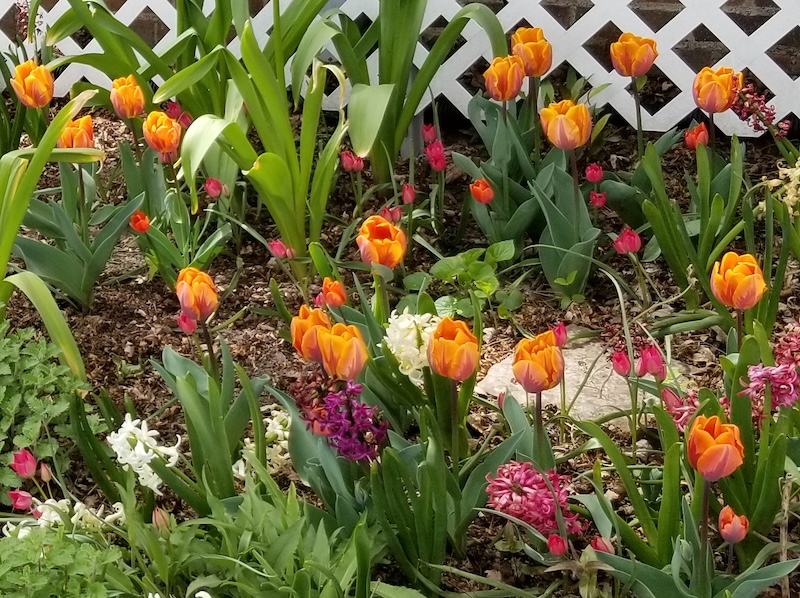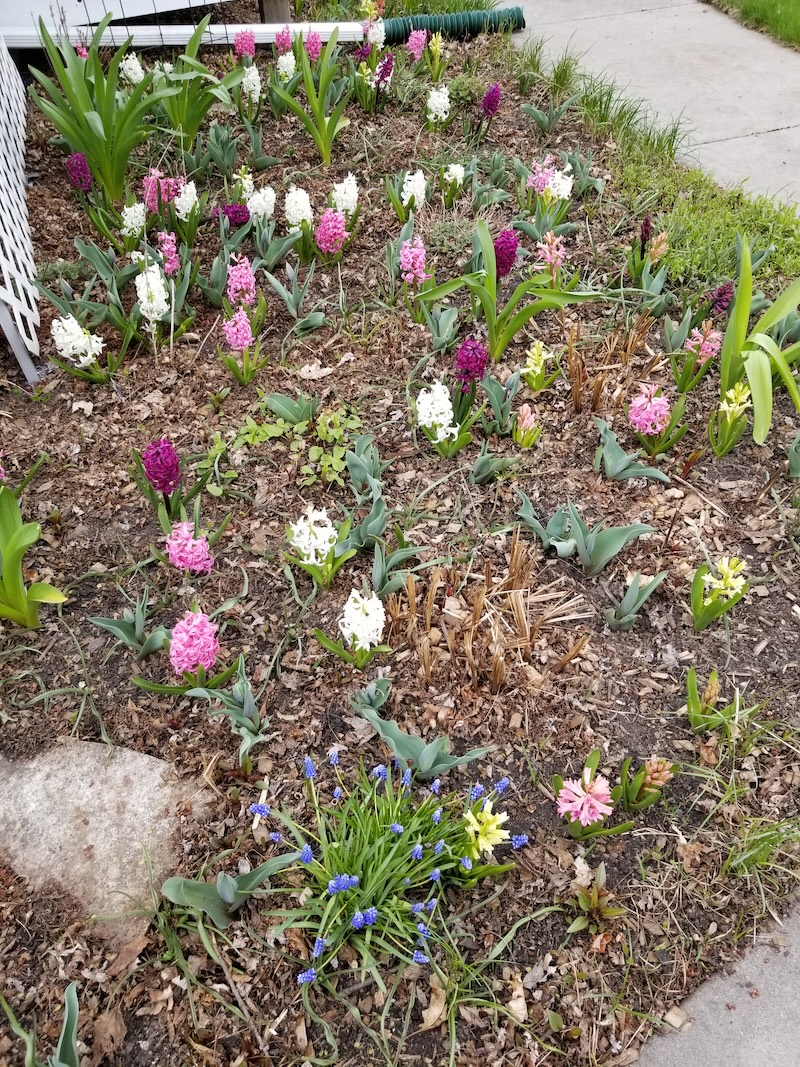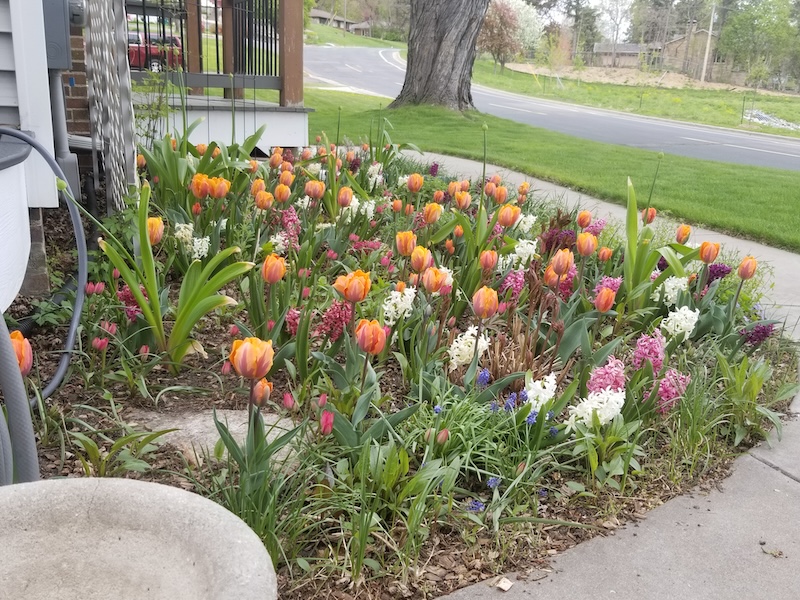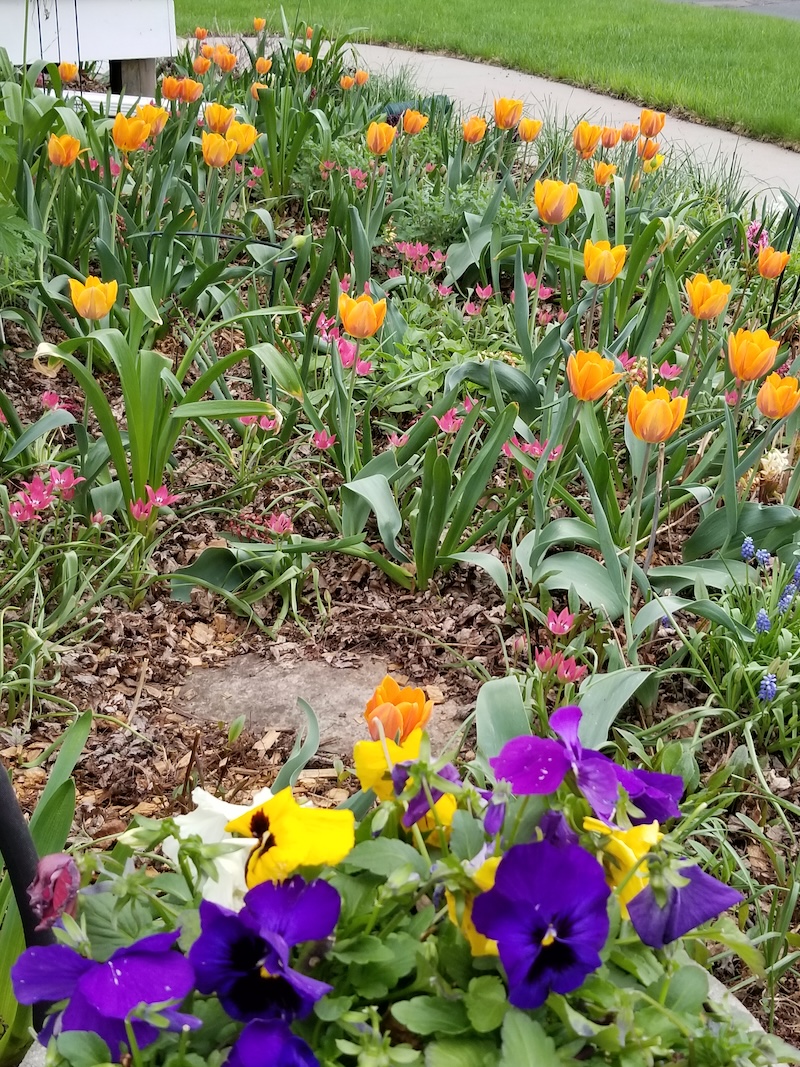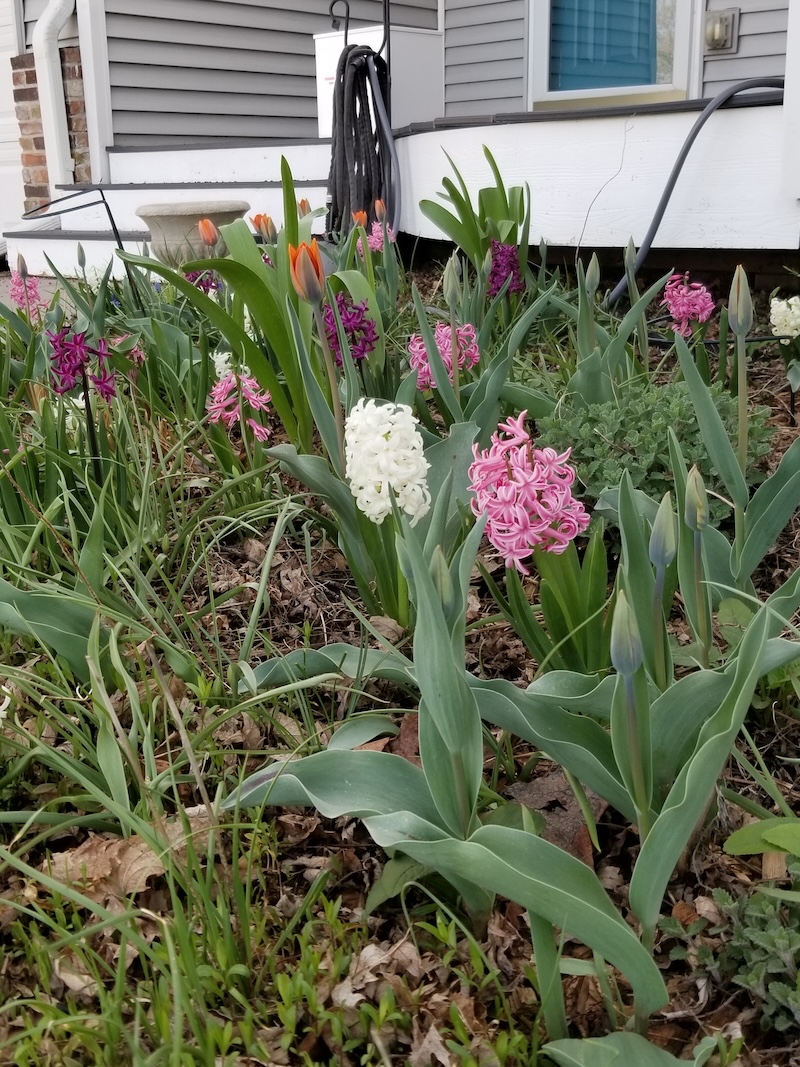Spring bulb garden
My best pandemic project.
We have a small garden bed along the front of the house with perennials that don’t really get going until summer. I was inspired by Gail Brown Hudson’s article in Northern Gardener magazine (March/April 2020). She wrote about her experiment for a spring bulb garden using a variety of bulbs planted randomly.
The plan
The technique is based on the naturalistic style of Dutch garden designer Jacqueline van der Kloet. You determine bulb placement using a scatter approach. Mix the bulbs, then toss with a wide sweep, and plant them where they land.
The guidance: Choose five or six species or varieties, in large numbers. Approximately 12 bulbs per square foot. So a three foot by three foot space should be about 108 bulbs.
For my roughly 120 sq feet that’s 1440 bulbs. It seems like an insane number, right? I planned for:
- 520 bulbs of varieties that don’t grow very tall: crocus, winter aconite, scilla, pushkinia, snowdrops, chiondoxa, anemone.
- 325 bulbs slightly taller or more distinctive: small allium or fritillaria, grape hyacinth (Muscari).
- 195 to 325 bulbs of giant grape hyacinth, trout lily (Erythronium), bluebells, iris reticulata, wild or botanical tulips such as tulipa turkestancia, t. clusiana, t. tarda, or dwarf narcissus like “tête-à-tête”.
- 156 to 195 bulbs of other tulips, daffodils, hyacinths, or summer snowflake (leucojum aestivum).
- 40-65 large flowered, tallest variety of allium, camassia, or fritillaria (24-30 inches tall).
After bulbs bloom, break off the flowers and let stems and foliage dieback in place.
June 2020. I ordered from Brecks.com
- Blue grape hyacinth: 300 (#2)
- Persian blue allium: 50 (#5)
- Star of Holland (Scilla siberica): 500 (#1)
- Blue Daisy Anemone: 90 (#4? not really a spring bulb, I just thought they were pretty and would be a fun experiment)
from dutchbulbs.com
- Allium Gladiator: 10 (#5)
- Royal hyacinth trio: 100 (#4)
- Species crocus blue pearl: 125 (#1)
- Triumph tulip Princess Irene: 100 (#4)
- Botanical tulip Little Beauty: 200 (#3)
- Two bags of bulb food
- Bulb auger for a drill
What went wrong
The entire order from Brecks was delayed. Twice. When October came, we made the call to just plant what we had.
That meant I planted only a third of the bulbs I intended to.
The Brecks order arrived two weeks after we finished and mulched the bed. I didn’t want to clear off the mulch and dig around what we had just placed. Even though the grape hyacinth and scilla didn’t need to be planted as deep, I was over it. I put them in other places in the yard. The anemone were a stretch, I tried to pant some of them in containers that first spring, but they failed. I put some in the ground, too. Of those, only one flowered.
The crocus were a failure. Each year I have seen about six blooms out of the 125 we planted. Maybe we planted them at the wrong depth?
What went well
Preparing the front bed wasn’t as bad as I worried it would be. I trimmed down and marked the perennials and cleared mulch one weekend, then planted the next. We got the planting done in one day. Far fewer bulbs helped.
We have heavy clay soil. We’ve tried over the years to amend and loosen it up with little success. But. Bulb auger + corded electric drill with side handle = awesomeness.
Somehow, the squirrels did not destroy this bed. I was certain I would be fighting the squirrels and critters off and losing my tulips. But they never did discover them.
Blooms in colors I wouldn’t have normally picked. The perennials in this bed are white, purple, and pinks. I considered keeping that color palette for the spring bulbs, but I am so glad I didn’t. The color pop in early spring is so much better.
I lucked out on the tulips. The botanical/species tulips were such a neat color combination in the catalog, I thought they were too pretty to be true. They are bright and delicate and have returned in great number. They said they would naturalize and it appears so.
The orange Princess Irene tulips were a lucky pick, too. I have heard many times that tulips here in our cool zones are best treated as annuals. If the squirrels don’t get them first, they will only bloom one year. You may get some back, but it will be fewer and fewer. I do think now, in year four, there are fewer tulips, but there are still more than I expected.
Results
One of the better garden experiments I’ve done. So happy with the results. March through May, I look and see delightful changes each day. The maintenance is nothing, really. I dead-head. By the time the foliage is dying back, the perennials are filling in and covering it up. The yellowing leaves are hard to make out on a background of cedar mulch.
I love the random and natural pattern of the plants. I am so glad I didn’t try to place them myself.
Year one: 2021
Year two: 2022
Year three: 2023
Year four: 2024
What would I do different next time
I should have planted the bulbs that arrived later. At least the grape hyacinths. I have a handful in one spot and they are so beautiful with the orange tulips.
If I ever plant that many bulbs again, I would dig the entire space down to tulip-depth, scatter the bulbs, then add soil over them to build up the levels to plant everything to the correct depth. It would be easier to dig the whole area and only have to do a few dozen holes for the largest bulbs. I would plan to split and move perennials at the same time.
References
Photos by Charity Fretty
